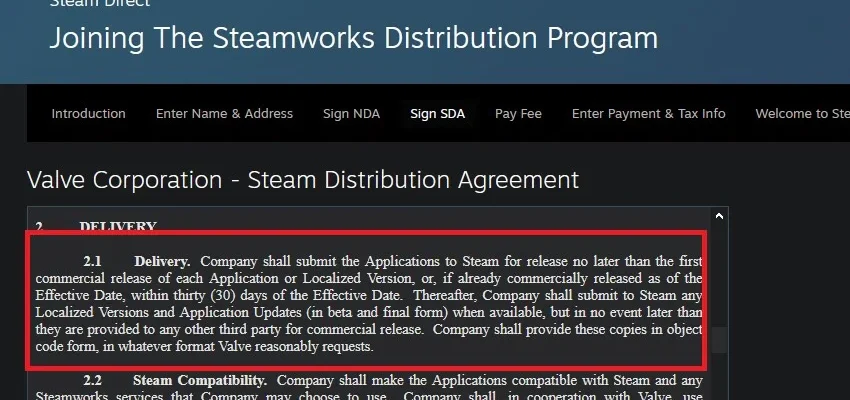Valve, the enigmatic architect behind the ubiquitous Steam platform, has once again piqued the curiosity of the tech world. A recent trademark registration hints at ambitious new hardware and software ventures, leaving enthusiasts to ponder: what exactly is “Steam Frame”?
The New Filing: A Broad Brushstroke
According to documents filed with the United States Patent and Trademark Office (USPTO), Valve officially registered the trademark “Steam Frame” on September 3rd. While the name itself offers little in the way of immediate clues, the categories it encompasses are remarkably expansive, painting a picture of diverse potential future endeavors.
The filing covers a wide array of technological classifications, suggesting Valve isn`t merely tweaking an existing product but potentially laying the groundwork for a significant new ecosystem or product family. These categories include:
- Computer equipment: This broad term could mean anything from full-fledged gaming PCs to specialized computing units.
- Network equipment: Suggests an emphasis on connectivity, perhaps for enhanced streaming, multiplayer experiences, or device interoperability.
- Computer periphery: Points to external devices – controllers, displays, input devices, or even accessories for existing hardware.
- Computer hardware and software for reproducing, processing, and transmitting audio, video, data, text, and multimedia content: This is a particularly comprehensive description, indicating a strong focus on media consumption, creation, and seamless content delivery, potentially for streaming, virtual reality, or advanced multimedia systems.
This wide scope is characteristic of Valve`s long-term strategic planning, often securing broad intellectual property rights well in advance of public announcements. It implies a strategic move beyond simple software distribution into deeply integrated hardware and services.
Valve`s Hardware History: A Tapestry of Innovation and Experimentation
Valve`s journey into hardware has always been an interesting one, marked by both groundbreaking successes and bold, albeit sometimes niche, experiments. From the innovative but ultimately short-lived Steam Machines to the surprisingly popular Steam Deck, and the critically acclaimed Valve Index VR headset, the company has consistently demonstrated a willingness to push boundaries.
The Steam Deck, in particular, proved that Valve could successfully design and market a dedicated gaming device, carving out a significant niche in the handheld PC market. This success undoubtedly emboldens the company to explore further hardware frontiers. The “Steam Frame” trademark appears to be the next chapter in this ongoing saga, suggesting a commitment to delivering new ways to interact with the Steam ecosystem.
Whispers and What-Ifs: Peeking Behind the Curtain
While Valve maintains its usual veil of secrecy, the tech rumor mill is, as always, working overtime. Speculation surrounding Valve`s next big hardware push has been rife for some time. Persistent rumors suggest the company is working on a new virtual reality (VR) headset, with some anticipating a reveal as early as late 2025. Given the extensive categories covered by “Steam Frame,” a next-generation VR system with advanced processing and streaming capabilities seems a plausible fit.
Further adding fuel to the speculative fire, an April leak offered a tantalizing, albeit unconfirmed, glimpse of a “Steam Box” console prototype. This could indicate Valve is exploring another dedicated home gaming device, perhaps a more powerful, living-room-centric companion to the portable Steam Deck, leveraging the “frame” concept for a modular or integrated system.
What Could “Steam Frame” Truly Be?
With such a broad definition, the possibilities for “Steam Frame” are tantalizingly open. Here are a few informed hypotheses:
- A Modular PC System: The “Frame” in “Steam Frame” could refer to a modular computing chassis, allowing users to easily upgrade or customize components similar to a desktop PC, but within a more streamlined, console-like form factor. This would appeal to the tinkerer ethos of PC gaming while offering a more accessible entry point.
- An Advanced Streaming Device: Given the emphasis on “transmitting multimedia content,” “Steam Frame” could be a dedicated, high-performance streaming box designed to deliver uncompromised PC gaming experiences from a local PC or cloud to any screen in the home, or even on the go. Imagine a powerful streaming client that integrates seamlessly with Steam, potentially even offering its own onboard processing for lightweight tasks.
- The Next-Gen VR Platform: This is a strong contender. A new VR headset could be accompanied by a dedicated computing unit, a “frame” that handles the intense processing required for cutting-edge virtual experiences, offering a step up from the current Valve Index and competing directly with standalone VR devices that rely on mobile chipsets.
- A “Smart Home” Entertainment Hub: While less likely given Valve`s primary focus, the broad description could also encompass a device that serves as a central hub for gaming, media consumption, and perhaps even light productivity, integrating into a broader home network.
Anticipation Builds
As is customary with Valve, official details on “Steam Frame” are as elusive as a confirmed release date for Half-Life 3. The company`s strategy often involves patient development and sudden, impactful reveals. However, the registration of this comprehensive trademark serves as a concrete indicator: Valve is far from content to simply rest on its software laurels. They are actively investing in the future of how we interact with games and digital content, promising new hardware and software experiences that could once again redefine the landscape of PC gaming. The industry, and indeed gamers worldwide, will be watching closely for Valve`s next big reveal, ready to see what revolutionary “Frame” they have built for us.









